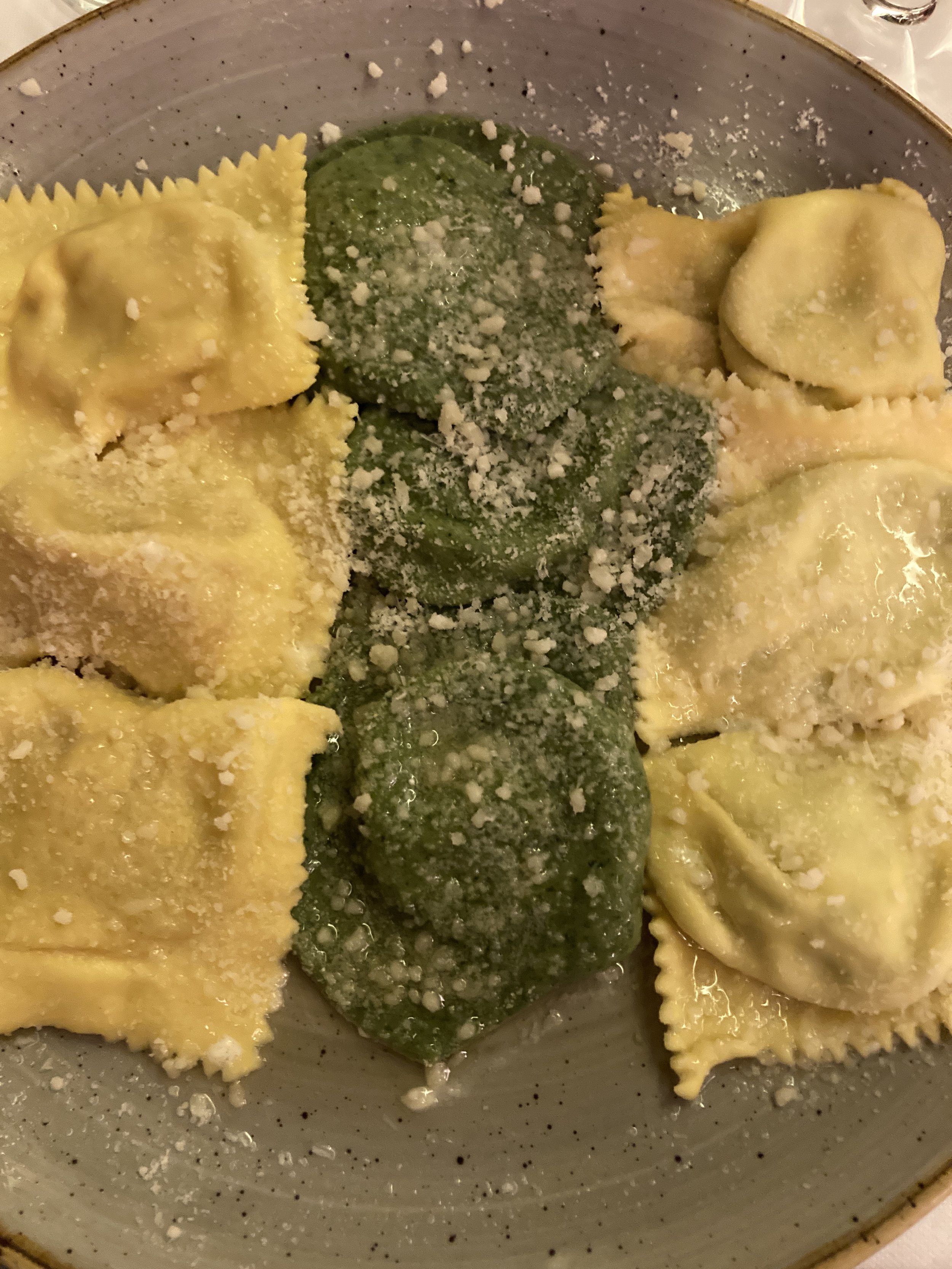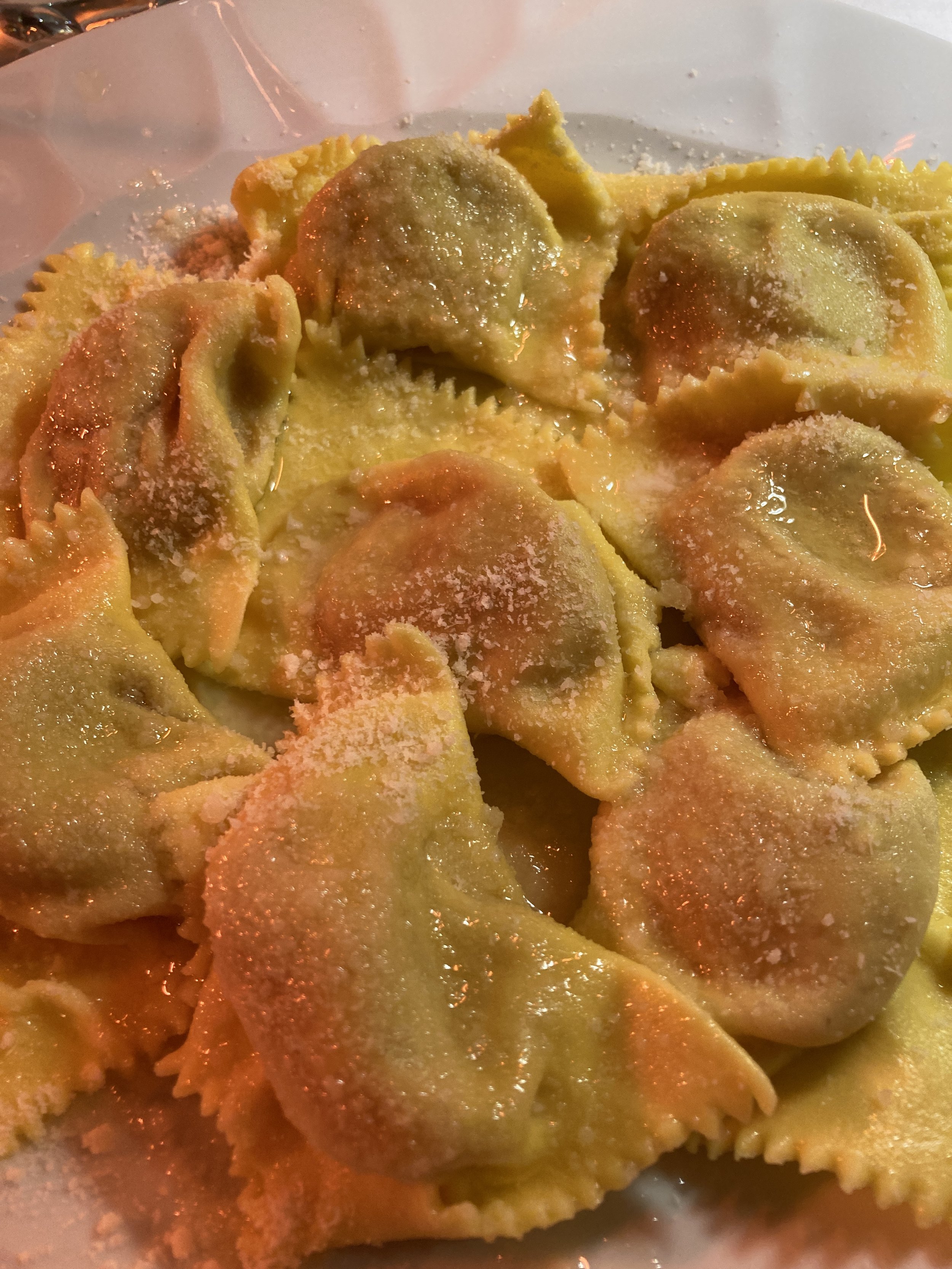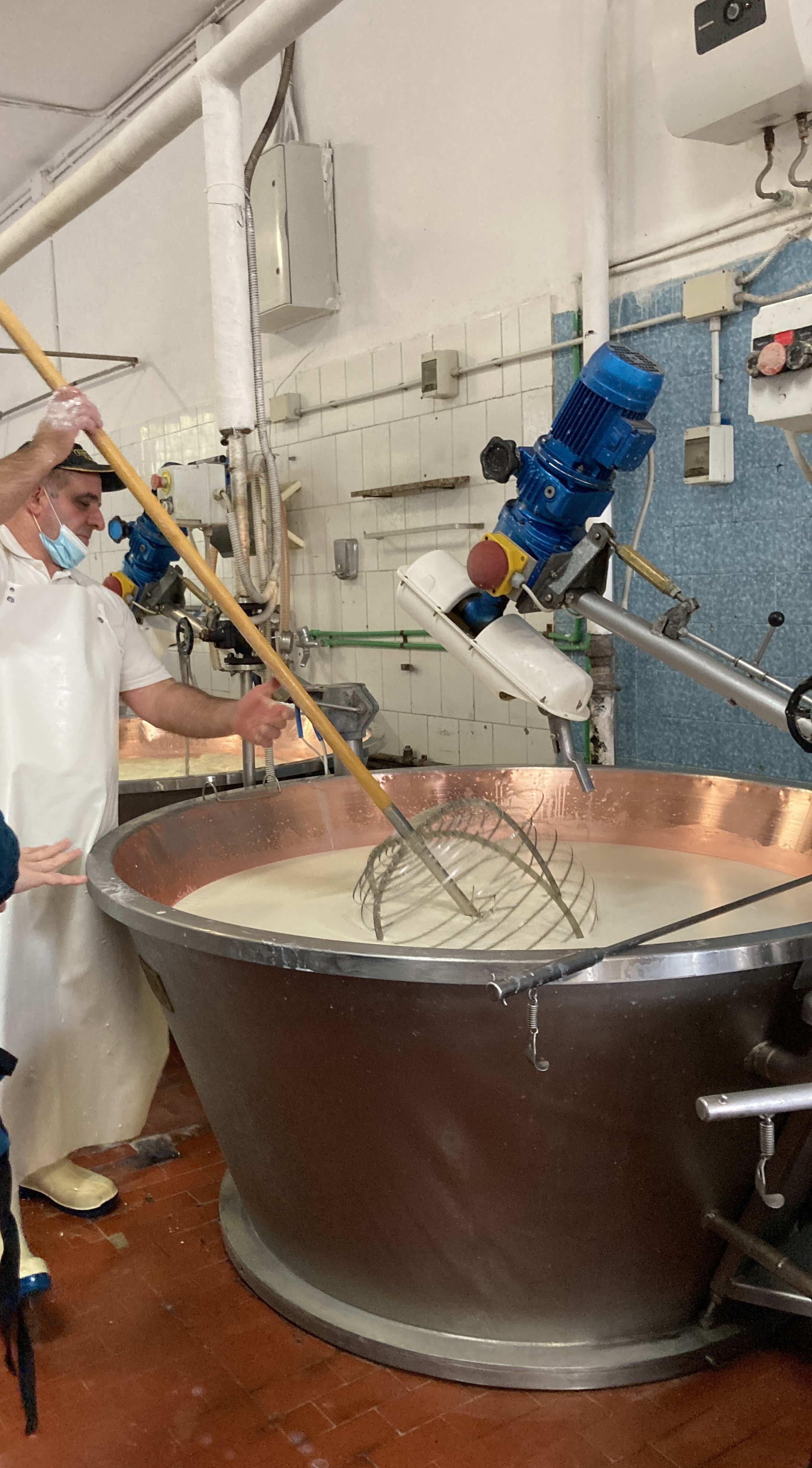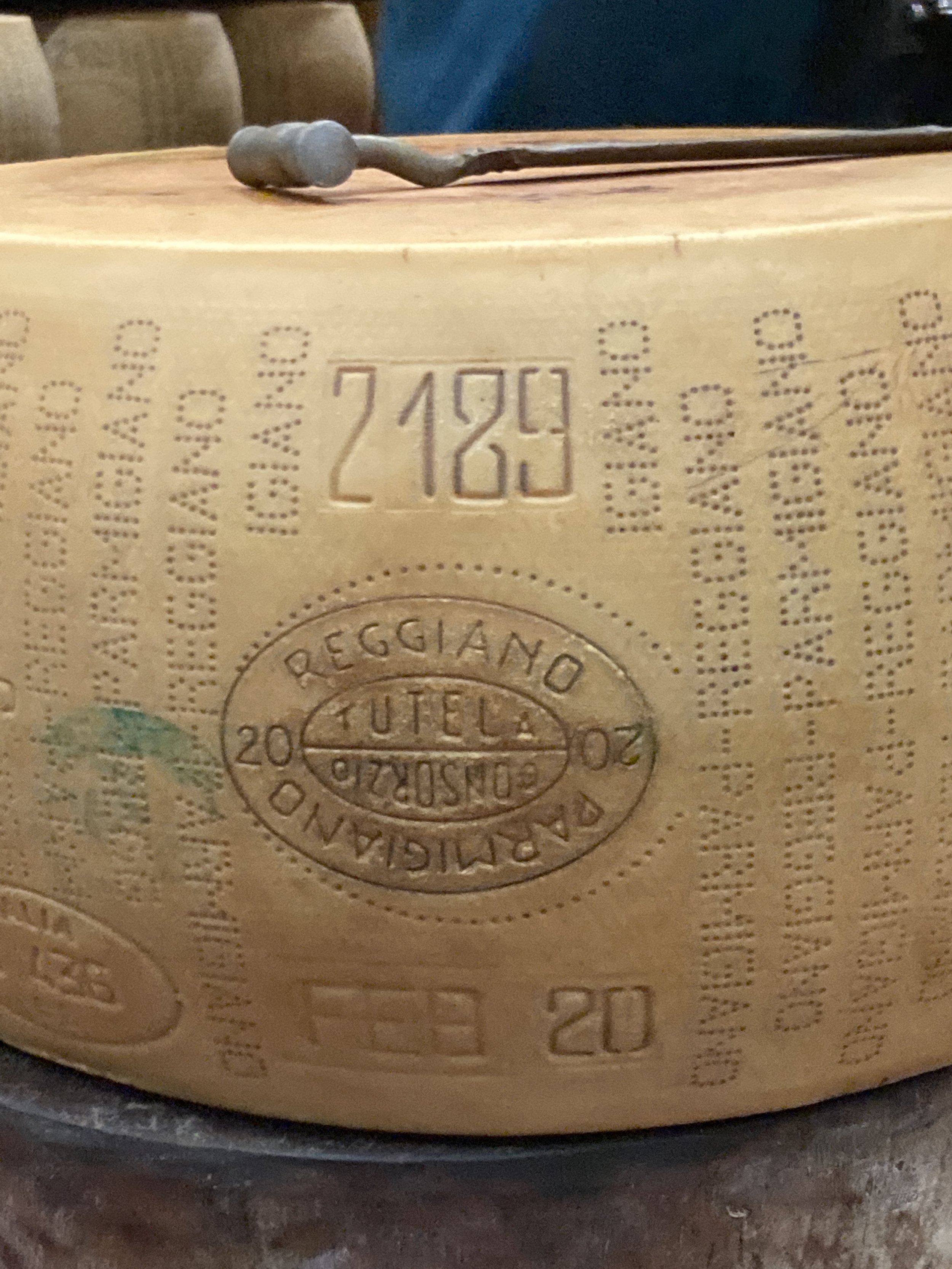Tasting Parma (Part One)
The Emilia-Romagna region of Italy is famous for many things – the University of Bologna (founded in the year 1088 and still going strong), art, architecture, museums, beautiful landscapes, resorts along the Adriatic coast, and expensive automobiles (think Maseratis and Ferraris). But even with all of these riches, Emilia-Romagna is perhaps most celebrated for its food.
Tortellini in brodo - a specialty of Bologna
The production of local specialty foods goes from field to table in this region of Italy. Wheat, corn, vegetables, fruit and grapes are important crops (yes, I know grapes are fruit but really, they deserve a category of their own, don’t you think?). And then there are the pigs! This region is home to some of the world’s finest, make that tastiest, pigs.
These products give rise to many of the dishes that define Italian cuisine – filled pastas, tasty sauces, wonderful cured meats, local wines like Lambrusco and Pignoletto, world-famous cheese and exquisite balsamic vinegar. Food is practically religion in this part of Italy and Bologna, Modena and Parma comprise the geographic holy trinity. Consider me una pellegrina (a pilgrim). With culinary pilgrimage in mind, I recently ventured to Parma to learn about some of the regions famous products – Parmigiano Reggiano (parmesan), Proscuitto di Parma (#1 lesson, don’t call this ham!) and Aceto Balsamico (the real deal balsamic vinegar for which there simply is no substitute).
The combination of perfectly ripe melon and salty Prosciutto di Parma is a flavor superstar during the summer season
I figured that there were two ways to learn about these local delicacies – tasting them and visiting the places where each is produced. And so I set off to do both.
Finding good Parmigiano Reggiano and Prosciutto di Parma to taste is simple, in fact it is hard to find a meal in Parma that doesn’t include one or the other of these. If there is a form of Stendahl syndrome for food, surely this region is where the affliction is likely to occur.
Walk past any bar at lunch, aperitivo time, or dinner and you are sure to spot a plate of thinly sliced prosciutto alongside a basket of bread. Chunks of parmigiano are often served accompanied by a drizzle of intense balsamic vinegar. If you happen to visit in summer, look for ripe slices of cantaloupe wrapped in soft, almost buttery tasting, slices of locally produced prosciutto.
My tasting journey began with my very first lunch in Parma. The English language menu said “toast with ham” (why did they give me the English menu?). What arrived was quite a bit more complex - crisp wedges of warm crusty bread topped with paper thin slices of Proscuitto di Parma and a soft, melty stracchino cheese. This was paired with a glass of slightly fizzy pignoletto wine. Oh my. This is the best kind of research.
Focaccia with Prosciutto di Parma and stracchino cheese. Delicious!
The parmigiano tastings came at several dinners with a variety of filled pastas topped with generous sprinkles of cheese and one lovely salad of arugula with steak topped with big shavings of parmigiano. Each was a perfect compliment to the dish it topped.
The cheese maker uses a spino to stir the granules that will eventually become parmesan cheese.
Next up, a food tour arranged by Get Your Guide. This was supposed to be a group tour, but ended up just being myself and my traveling companion (the benefit of off-season travel). Our driver collected us near our hotel and off we went. First stop, the Caseificio Ugolotti, a family run dairy that has been producing parmigiano cheese using traditional methods since 1930. There we observed (and smelled) all the steps in the production of Parmigiano Reggiano cheese. The process begins by combining skim milk collected from local, carefully fed cows the previous evening with the morning’s collection of whole milk. 1000 liters of milk is needed to produce just two wheels of cheese!
Rennet is added to begin the process of curd formation. This takes place in deep copper-lined vats. As granules begin to form, the expert cheese maker, clad in heavy boots and a rubber apron, breaks the granules up with a long whisk-like tool called a spino. We watched as the cheese masters moved from one vat to the next, wielding their spini in a slow motion ritual which has barely changed over the years.
Next, the milk is heated (temperature is key) and the granules slowly sink to the bottom of the vat, forming a mass. It surprised me to see the cheesemakers repeatedly dipping their fingers into the vats, but the guide explained that their trained hands could tell by feel when the granules were heated just enough and starting to form a loose mass which looks a lot like cottage cheese.
This loose mass is the next step in the formation of parmesan cheese
The mass (which becomes quite large and heavy) is then lifted from the vat in a canvas sling (look for a video of this on the Two Parts Italy Facebook page). Each mass is cut in half and each half placed in a round mold. The mold creates the classic shape of a wheel of parmesan and presses markings into each wheel. The markings include a code which gives information about the date of production and the dairy. The leftover liquid (whey) is drained and used for animal feed (including for those special pigs which will become prosciutto).
This is how a wheel of Parmigiano Reggiano is born!
After a few day’s rest in the molds, the rounds of cheese are transferred to another room and placed into a salt water bath. There they are turned twice daily while they slowly absorb some of the sea salt. This is how the cheese gets its salty flavor. Milk, rennet, and sea salt are the only ingredients used in the production of Parmigiano Reggiano cheese. Plus a little sprinkle of magic I think!
Resting in the saltwater bath. Turning them frequently moves the exposed upper part of the wheel into the salt water bath.
Next, the cheese must age for at least 12 months in a temperature controlled room. To prevent mold from forming during this time the wheels of cheese are washed and brushed periodically. Historically done by hand, today there are machines for this process.
The aging room at Caseficio Ugolotti. The empty oval space on the wheel of cheese shows that it has not yet been inspected.
After aging, the cheese is inspected by an official inspector who uses a hammer to tap the wheels of cheese. Based on the sound, the inspector grades the cheese and certifies the quality. If a wheel of cheese fails inspection it cannot be sold for human consumption. The mark within the oval shows that the wheel has been approved by the inspector.
I have often wondered about the high price for a really good wedge of Parmigiano Reggiano. Seeing this labor intensive process gave me a new appreciation for the cost. It now seems like a bargain to me!
At the end of the tour we entered the tasting room. There, we sampled cheeses of different ages (12, 18, and 24 months). Each had a different texture, color and flavor, developed during aging. The chunks of cheese were served with a bit of balsamic vinegar, some bread, and a glass of white wine.
A sample platter at Caseficio Ugolotti. The cheeses are Parmigiano Reggiano of 12, 18, and 24 months. A bit of balsamic vinegar drizzled over each piece compliments the flavor.
Caseficio Ugolotti was just the first stop on our food tour. It was fun, informative, and very tasty. Still to come were stops at an artisanal producer of balsamic vinegar and a producer of Prosciutto di Parma. More on those stops in the next post.













